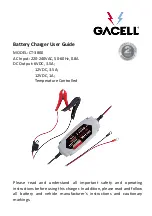
the vehicle’s tires. The tire pressure will also increase as the
vehicle is driven, this is normal and there should be no
adjustment for this increased pressure.
The TPMS will warn the driver of a low tire pressure if the
tire pressure falls below the low pressure warning limit for
any reason, including low temperature effects, or natural
pressure loss through the tire.
The TPMS will continue to warn the driver of low tire
pressure as long as the condition exists, and will not turn
off until the tire pressure is at or above the recommended
cold tire pressure on the placard. Once the low tire pressure
warning (Tire Pressure Monitoring Telltale Light) illumi-
nates, you must increase the tire pressure to the recom-
mended cold tire pressure in order for the Tire Pressure
Monitoring Telltale Light to turn off. The system will
automatically update and the Tire Pressure Monitoring
Telltale Light will turn off once the system receives the
updated tire pressures. The vehicle may need to be driven
for up to 20 minutes above 15 mph (24 km/h) in order for
the TPMS to receive this information.
For example, your vehicle may have a recommended cold
(parked for more than three hours) tire pressure of 30 psi
(207 kPa). If the ambient temperature is 68° F (20° C) and
the measured tire pressure is 27 psi (186 kPa), a tempera-
ture drop to 20° F (-7° C) will decrease the tire pressure to
approximately 23 psi (159 kPa). This tire pressure is suffi-
ciently low enough to turn on the Tire Pressure Monitoring
Telltale Light. Driving the vehicle may cause the tire
pressure to rise to approximately 27 psi (186 kPa), but the
Tire Pressure Monitoring Telltale Light will still be on. In
this situation, the Tire Pressure Monitoring Telltale Light
will turn off only after the tires are inflated to the vehicle’s
recommended cold tire pressure value.
CAUTION!
•
The TPMS has been optimized for the original
equipment tires and wheels. TPMS pressures and
warnings have been established for the tire size
equipped on your vehicle. Undesirable system op-
eration or sensor damage may result when using
replacement equipment that is not of the same size,
type, and/or style. Aftermarket wheels can cause
sensor damage. Using aftermarket tire sealants may
cause the Tire Pressure Monitoring System (TPMS)
sensor to become inoperable. After using an after-
market tire sealant it is recommended that you take
(Continued)
158 SAFETY
Summary of Contents for 500X 2019
Page 1: ...O W N E R S M A N U A L 2 0 1 9 FIAT 500X ...
Page 4: ......
Page 14: ......
Page 210: ......
Page 247: ...Distance Setting 3 Bars Long Distance Setting 2 Bars Medium 6 STARTING AND OPERATING 245 ...
Page 294: ......
Page 326: ...Jacking Locations Front Jacking Location 324 IN CASE OF EMERGENCY ...
Page 327: ...Front Jacking Engagement Point Rear Jacking Location 7 IN CASE OF EMERGENCY 325 ...
Page 402: ......
Page 453: ...INDEX 12 ...
















































